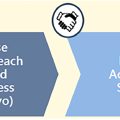The physician office offering imaging guided endovascular and minimally invasive interventional procedures is often referred to as an OBL (office based lab), OIS (office interventional suite), or OES (office endovascular suite). Initially, OBL’s depended upon the national societies of interventional radiology (SIR), vascular surgery (SVS) and interventional cardiology (SCAI) to advocate for them. However, the OBL space needed a voice dedicated to advocating for the appropriate reimbursement of procedures in the OBL to allow the OBL to survive as a viable site of service and become integral to healthcare delivery in the US healthcare system. This need led to the formation of the Outpatient Endovascular & Interventional Society (OEIS). The society is multispecialty and ensures safety in outpatient care in all sites of service while maintaining a focus on the OBL. The mission of the OEIS is to advocate for patients to have the ability to choose their provider and be able to receive safe and effective healthcare in a more friendly and far less costly site of service for them.
The physician office has been an established site to offer procedural services to patients dating to the medieval times of barbers. As medicine has progressed so has the complexity of outpatient procedures offered in the appropriately equipped physician office setting. The physician office offering imaging guided endovascular and minimally invasive interventional procedures is a relative newcomer in the history of medicine, with the first few avant garde centers opening in approximately 2005-06. The vernacular used to refer to these offices has varied from OBL (office based lab), to OIS (office interventional suite) to OES (office endovascular suite).
These offices appropriately billed as site of service 11 in the Medicare physician fee schedule in contradistinction to an ASC setting (site of service 24), the hospital outpatient department setting (site of service 22), and the hospital inpatient setting (site of service 21) where similar procedures are performed. Each of these sites of service have a relatively complex and different billing/fee structure that govern their reimbursement, with hospitals and ASC’s having a robust and active advocacy/lobbying organization to safeguard reimbursement in those sites of service, which is clearly evident when comparing medicare updates for varying sites of service compared to inflation ( Graphic 1 ). The unsustainable chasm between hospital reimbursement and physician office reimbursement has continued to grow and diverge.

When one further considers that CMS’s own data demonstrates at least 195 procedures are reimbursed in the office at a level below the actual cost of providing these services in the office ( Graphic 2 ), as well as the fact that office based procedural based specialties have had tremendous drops in reimbursement compared to cognitively based specialties over the same period ( Graphic 3 ), it is easy to understand that office based specialists need an advocate dedicated to maintaining the viability of the office as a site of service for health care delivery.


Initially, OBL’s depended upon the national societies of interventional radiology (SIR), vascular surgery (SVS), and interventional cardiology (SCAI) to advocate for them in the payment arena, however these societies understandably had many interests competing for time and resources that the small but burgeoning OBL sector needed. It was clear that OBL operators needed their own voice which was singularly focused on the OBL and having no other entities detracting from its mission.
With this as a backdrop, a group of 15 like-minded OBL owners from interventional radiology, vascular surgery, and interventional cardiology, agreed to meet on August 24, 2013 to discuss the needs of the sector as well as the potential formation of a national multispecialty medical society. Thirteen of the 15 founding members met in a conference facility at the Dallas airport ( Fig. 1 ) and engaged in lengthy, thoughtful discussions regarding the OBL space and its needs. It was unanimously agreed that the OBL space needed a voice dedicated to advocating for the appropriate reimbursement of procedures in the OBL to allow the OBL to survive as a viable site of service that has now become integral to healthcare delivery in the US healthcare system.







